Watches & Pencils #21 – The NASA Tests and the Speedmaster
This episode we finally set the Speedmaster watch in the spotlight of the Watches & Pencils feature. In particular, we zoom in on the first Speedmaster which has passed the NASA tests: the Omega Speedmaster with reference number 105.003. Also known as the ‘Ed White’ Speedmaster. Later on more about the NASA tests:
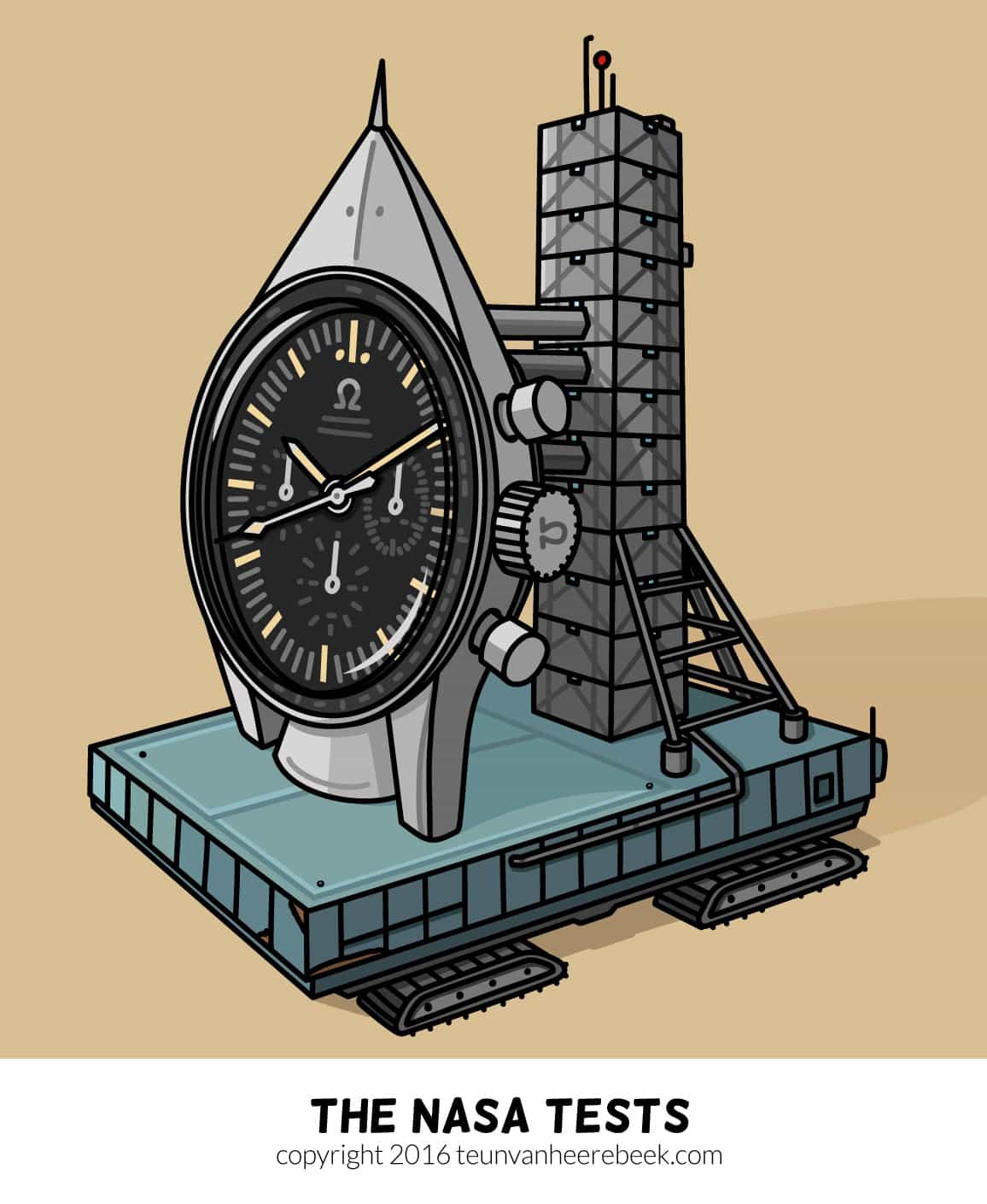
Form and Function Hand in Hand
The thing that really fascinates me about this watch is that there is such a harmony between form and function. The fundamentals of the Speedmaster are rock solid from the beginning; While the watch passed all the NASA tests, it was never designed especially for the tests. Before the 105.003 the watch was simply a commercial watch like any other. A sports chronograph. This was also confirmed by Jim Ragan, the NASA engineer who tested the Speedmaster. Though, the fact that astronauts bought Speedmasters privately (Schirra, Cooper and Slayton) for use at NASA before the certification did show the potential.
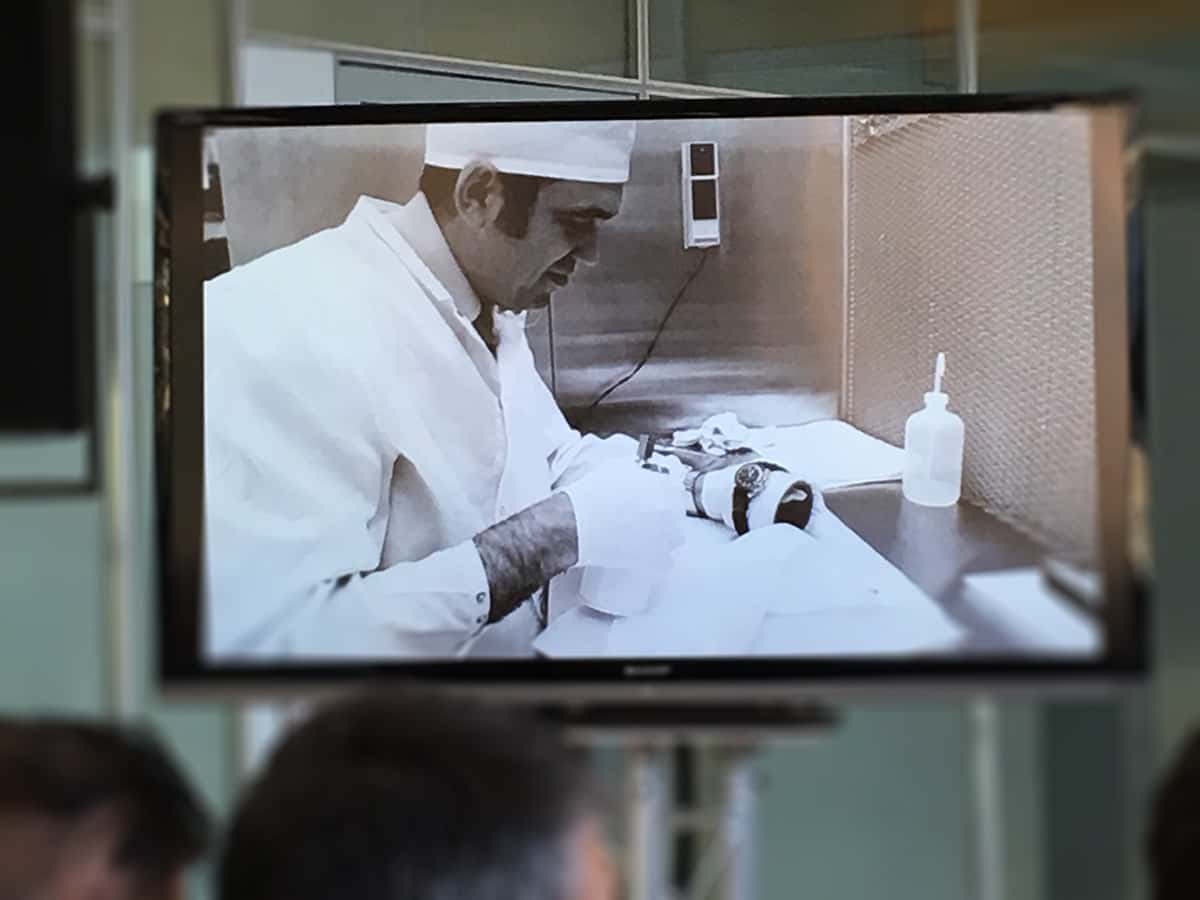
Archive picture of Jim Ragan testing a Speedmaster. Photo was taken during the latest Speedy Tuesday Event at Omega Watches in Bienne.
Gemini program: equiped with the Speedmaster
The Speedmaster 105.003 was worn by astronauts of the Gemini program: NASA’s second human spaceflight program from 1961 until 1966. It is often named ‘Ed White’ because he was the first astronaut who achieved a space walk during the fourth Gemini mission. Although the Speedmaser 105.003 was the first NASA certified watch, it cannot be named Moonwatch; no Gemini mission made a trip to the moon. The Gemini objective was to develop space travel techniques to support Apollo’s mission to land astronauts on the Moon. As we know, later on, the Apollo program together with the Speedmaster 105.012ST turned the Speedmaster (Professional) into the Moonwatch.
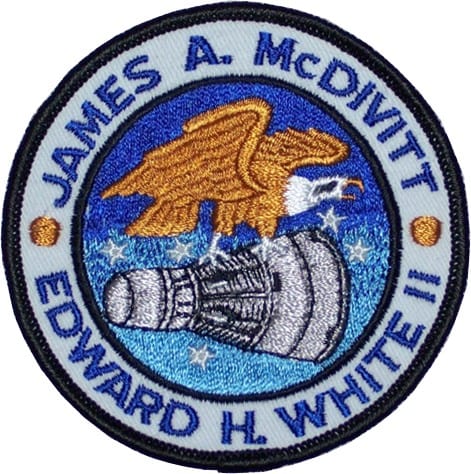
Gemini IV patch. The mission where Edward H. White achieved the first EVA (extravehicular activity) or space walk.
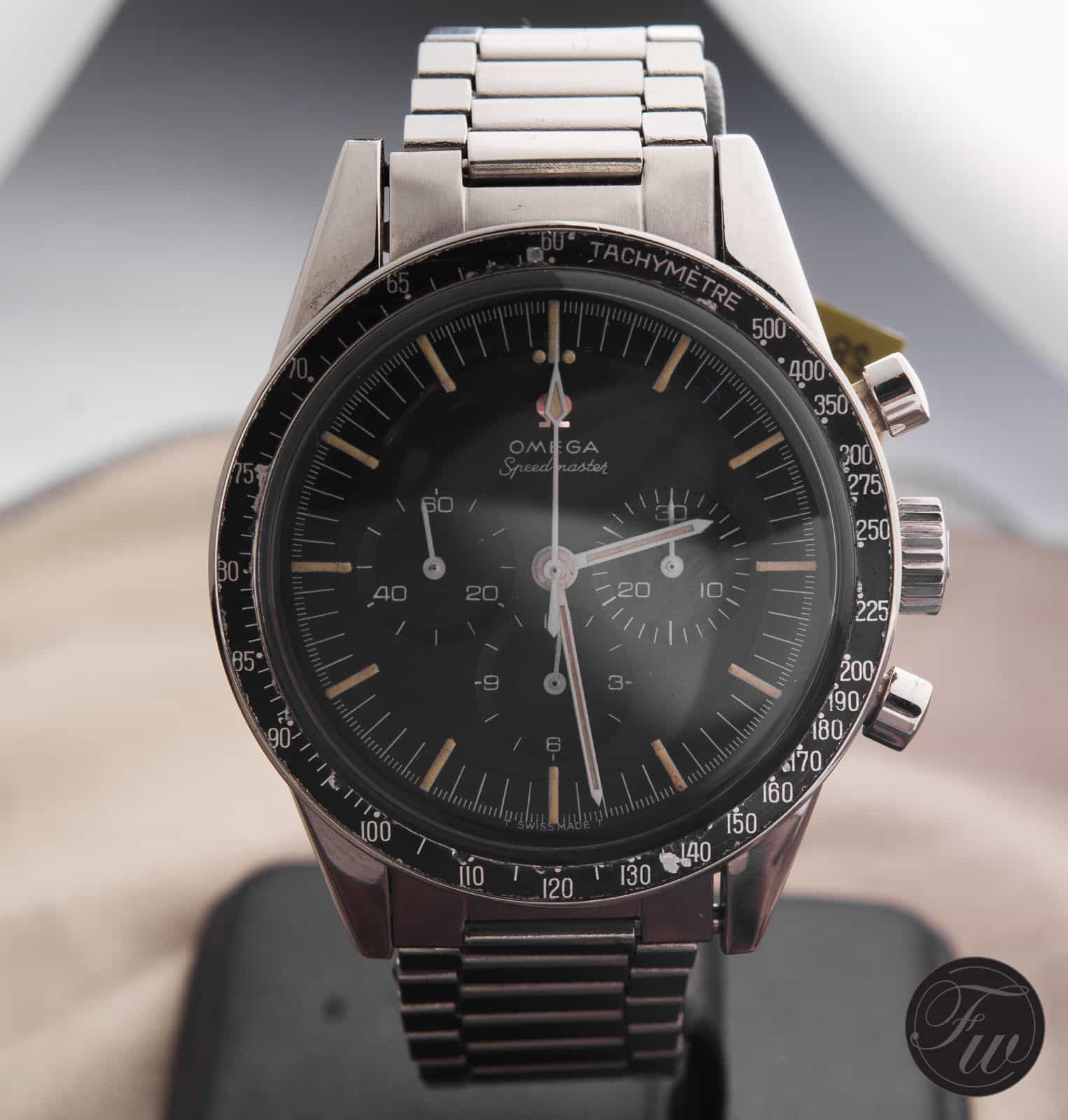
105.003-65 (auctioned at Christie’s)
NASA Tests
After a long and intensive test period the Speedmaster became the exclusive wristwatch for astronauts in 1965. But what tests did the 105.003 (or NASA reference 6049 – USA designation) pass?
- High temperature test: 70° C for 48 hours, then 93° C for 30 minutes in a partial vacuum.
- Low temperature test: -18° C for 4 hours.
- Vacuum test: heated in a vacuum chamber and then cooled to -18° C for several cycles.
- Humidity test: ten 24-hour cycles in >95% humidity with temperatures ranging from 25° C to
70° C. - Corrosion test: in an atmosphere of oxygen at
70° C for 48 hours. - Shock-resistance test: six 40 G shocks in six different directions.
- Acceleration test: progressive acceleration to 7.25 G for about five minutes and then to 16 G for 30 seconds in three axes.
- Low pressure test: pressure of 10’6 atmospheres at 70° C for 90 minutes, then at 93° C for 30 minutes.
- High pressure test: in an air pressure of 1.6 atmospheres for 60 minutes.
- Vibration test: random vibrations in three axes between 5 and 2,000 Hz With an acceleration of
8.8 G. - Sound test: 130 decibels at frequencies from 40
to 10,000 Hz for 30 minutes.
While the Speedmaster did pass all the tests and the other candidates did not (Longines and Rolex, later on Bulova), the Speedmaster also did not come out unscratched. The luminous material on the hour markers was deteriorated and the rate was affected by the decompression and acceleration tests. Though, it passed all the tests and it was officially certified by NASA.
Little Details Make the Difference
The NASA tests were (and still are) a true challenge for a watch and the Speedmaster survived. It is one of the reasons why I have a lot of respect for this watch in particular. Despite this, Omega still managed to include a sophisticated design. It are the details in the full Speedmaster range that make each reference so specific. The 105.003 is no exception. While the general looks serve the functions, the details make the difference without disturbing the measurement, accuracy, etcetera. The 105.003 is the last series with the straight lugs-case. Later on, the Speedmaster will evolve even more with an asymmetrical case/crown protector. Again, it was Jim Ragan who suggested Omega to design a case with better pusher/crown protection after a series of tests.
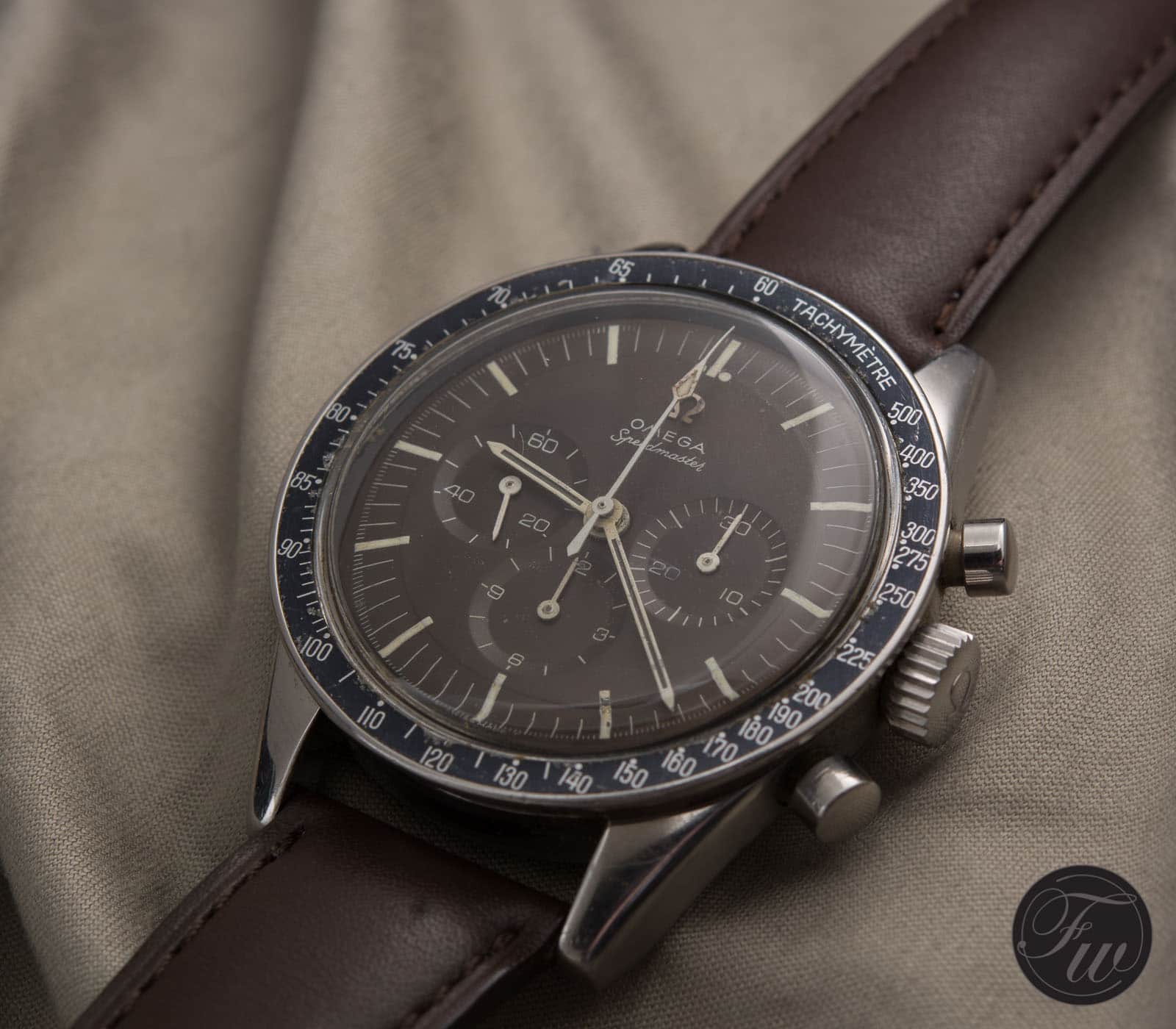
Omega Speedmaster 105.003-64 “Ed White Tropical”
Further reading
Of course, we’ve featured this subject and watch already in the past. If you want to read more about it I would suggest the following article where Robert-Jan does the in-depth full story: How the Speedmaster became the Moonwatch. For a recent story about the 105.003 and all its features with buying tips please read Mike’s story in the throwback Thursday feature: Omega Speedmaster 105.003 Ed White.
I hope you’ve enjoyed this launch and see you next time!

Jim Ragan interview (Speedy Tuesday Event – Bienne)
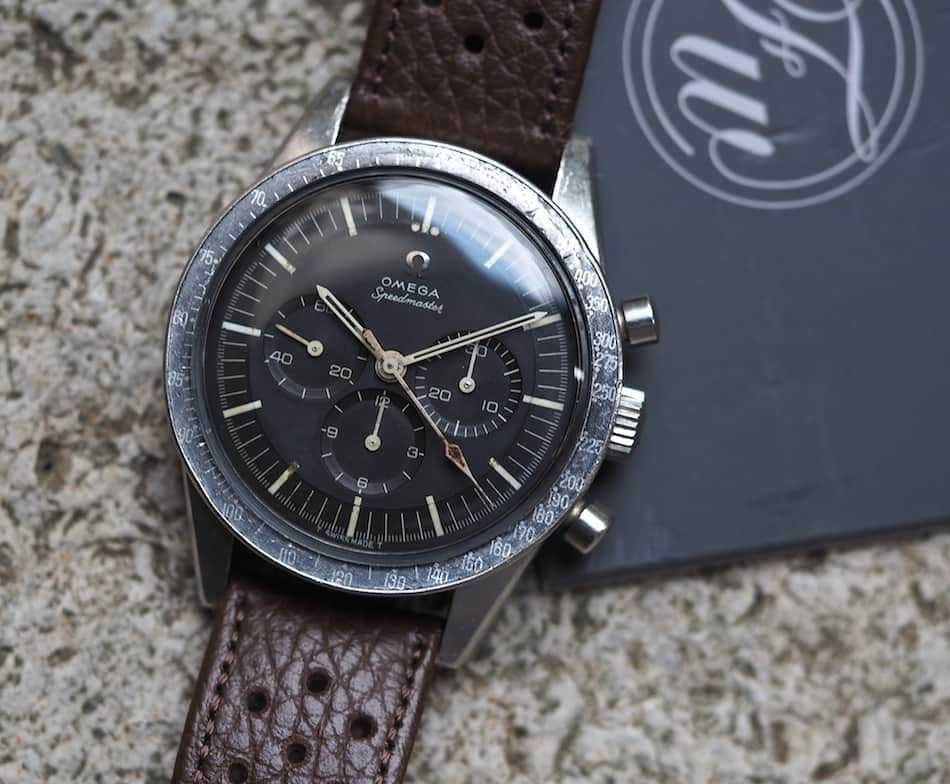
Mike’s 105.003
